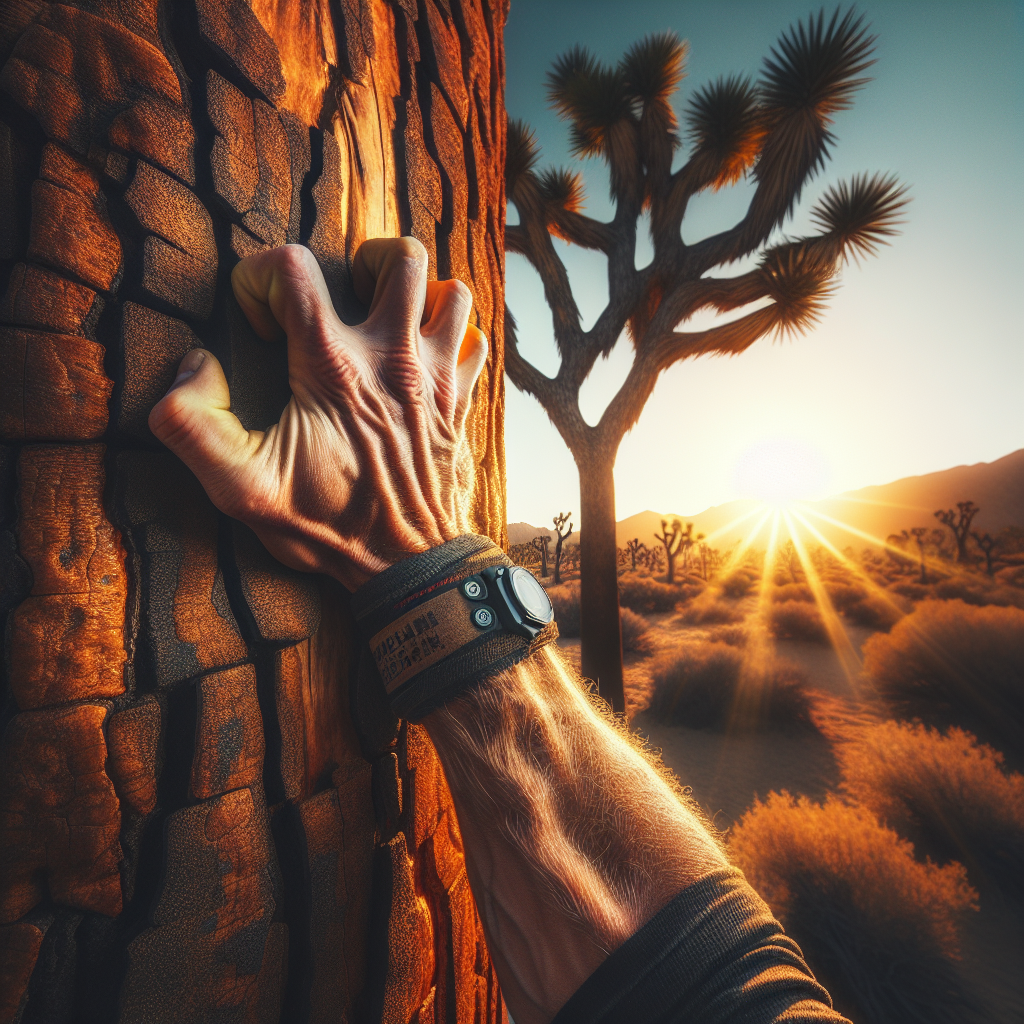
So you’ve been dreaming of conquering the stunning granite rock formations of Joshua Tree National Park, but before you start planning your epic climbing adventure, there’s one important question you need to ask: are permits required for climbing in Joshua Tree? Well, the answer is not as straightforward as you may think. While the park does not specifically require permits for rock climbing, there are certain guidelines and regulations in place to ensure the safety and preservation of this unique desert landscape. Let’s shed some light on the details and explore what you need to know before tackling those rugged cliffs.

Permit Requirements for Climbing in Joshua Tree
Joshua Tree National Park is a popular destination for climbers of all skill levels, offering breathtaking rock formations and a challenging climbing experience. However, it is important to be aware of the permit requirements before embarking on your climbing adventure. This article will provide you with a comprehensive guide to the permit requirements, obtaining permits, climbing regulations, safety considerations, climbing etiquette and ethics, as well as information about guided climbing and instruction in Joshua Tree.
Types of Permits
In Joshua Tree National Park, there are two types of climbing permits: individual permits and group permits. Individual permits are for climbers who are not part of a guided climbing group, while group permits are required for organized climbing activities involving two or more people. Whether you plan to climb on your own or with a group, it is important to familiarize yourself with the permit requirements to ensure a smooth and enjoyable climbing experience.
When Permits are Required
Permits are required for all climbing activities in Joshua Tree National Park. This includes bouldering, traditional climbing, sport climbing, and any other form of climbing within the park boundaries. It is important to note that permits are not only necessary for climbing on the park’s established routes but also for any climbing that may occur off-trail or on undeveloped areas within the park.
Exemptions and Special Programs
There are certain exemptions and special programs that may allow climbers to avoid obtaining a climbing permit. For example, climbers who are participating in research projects or educational programs sanctioned by the National Park Service may be exempt from the permit requirement. Additionally, there are special programs such as the Climbing Volunteer Program that allow climbers to contribute to the park’s maintenance and preservation efforts in exchange for exemption from the climbing permit requirement. It is important to check with the park authorities or visit the official Joshua Tree National Park website for detailed information on these exemptions and special programs.
Obtaining a Climbing Permit
To obtain a climbing permit in Joshua Tree National Park, climbers have two options – the online permit reservation system or in-person permits. The online permit reservation system allows climbers to secure their permits in advance, providing convenience and avoiding potential long queues. The reservation system can be accessed through the official Joshua Tree National Park website. On the other hand, in-person permits can be obtained at any of the park’s visitor centers. It is advisable to arrive early to secure your permit, especially during peak climbing seasons.
Cost of Permits
There is a fee associated with obtaining climbing permits in Joshua Tree National Park. As of [insert year], the cost for an individual climbing permit is [insert fee] and a group climbing permit costs [insert fee]. These fees are subject to change, so it is important to check with the park authorities or the official website for the most up-to-date pricing information.
Climbing Regulations in Joshua Tree
In order to ensure the safety and preservation of the climbing resources in Joshua Tree National Park, there are specific climbing regulations that climbers must adhere to. It is crucial to familiarize yourself with these regulations to avoid any violations that may result in penalties or jeopardize the climbing experience for yourself and others.
Climbing Season and Restricted Areas
Climbing in Joshua Tree National Park is allowed year-round, but it is important to note that certain areas may be restricted during specific times of the year to protect sensitive wildlife or for other conservation purposes. It is important to obtain the most up-to-date information on restricted areas and climbing seasons to ensure compliance with the park regulations.
Bolting and Fixed Anchors
Bolting, the process of permanently attaching hardware to the rock to create anchors, is regulated in Joshua Tree National Park. The use of fixed anchors, such as bolts or pitons, should be kept to a minimum. Climbers are encouraged to respect the park’s traditional ethics, which prioritize clean climbing and minimal impact on the natural environment.
Leave No Trace Principles
Joshua Tree National Park follows the principles of Leave No Trace, which promote responsible outdoor practices to minimize human impact on the environment. Climbers should practice Leave No Trace principles by packing out all trash, including human waste, and minimizing damage to vegetation and wildlife habitats. It is important to leave the climbing areas as you found them, ensuring that future generations can enjoy the park’s natural beauty.
Safety Considerations for Climbing in Joshua Tree
While climbing in Joshua Tree National Park can be a thrilling and rewarding experience, it is important to prioritize safety at all times. There are several factors climbers should consider to ensure a safe climbing adventure in the park.
Weather and Temperature
The weather conditions in Joshua Tree can be extreme, with temperatures fluctuating greatly throughout the day and night. It is essential to check the weather forecast before heading out to ensure that you are adequately prepared for potential heat, cold, or storms. Staying hydrated and protecting yourself from sun exposure are also crucial to minimizing the risk of heat-related illnesses.

Rock Fall Hazards
Rockfall is a natural hazard that climbers should be aware of in Joshua Tree National Park. Loose rocks and boulders can pose a significant risk, so it is important to carefully assess the stability of the rock before climbing and use caution when pulling or stepping on holds. Wearing a helmet is strongly recommended to protect against potential rockfall.
Equipment and Gear
Having the appropriate equipment and gear is crucial for a safe climbing experience in Joshua Tree National Park. Climbers should ensure they have a well-fitted harness, a climbing helmet, a rope, appropriate climbing shoes, and any other necessary equipment for their chosen climbing style. Regular inspection of gear and proper use of safety devices, such as carabiners and belay devices, is also important for maintaining safety while climbing.
Climbing Etiquette and Ethics
Climbing etiquette and ethics play a significant role in maintaining a positive climbing experience for all climbers in Joshua Tree National Park. Practicing good climbing etiquette not only enhances safety but also fosters a sense of community and respect among climbers.
Sharing Routes and Communication
Due to the popularity of climbing routes in Joshua Tree, it is common for multiple parties to be climbing on the same route simultaneously. It is important to communicate with other climbers, establish a system for sharing the route, and be aware of others’ presence and needs. Open and respectful communication can help prevent accidents and conflict while climbing.
Camping and Litter
Camping is a popular choice for climbers visiting Joshua Tree National Park. It is essential to adhere to the park regulations and camp only in designated campsites or areas permitted for camping. Leave No Trace principles should be followed when camping in order to minimize your impact on the environment. This includes proper disposal of trash, including any climbing-related waste, such as tape or broken gear.
Respecting Wildlife
Joshua Tree National Park is home to a diverse range of wildlife, including protected and endangered species. It is important to respect their natural habitats and observe from a distance. Climbers should avoid disturbing or feeding wildlife and should ensure that their activities do not negatively impact the park’s delicate ecosystem.
Guided Climbing and Instruction
For climbers who are new to Joshua Tree or those looking to enhance their skills under professional guidance, guided climbing services can be a valuable resource. When choosing a guide service, it is important to consider their reputation, safety record, and qualifications. Additionally, guided climbing activities in Joshua Tree National Park require permits, so climbers should ensure that the guide service they choose is operating legally and in compliance with the park regulations.
Permits for Guided Climbing
Guided climbing activities in Joshua Tree National Park require a special permit. Guide services are responsible for obtaining these permits, ensuring compliance with park regulations, and prioritizing the safety and experience of their clients. As a participant in a guided climbing trip, it is important to communicate with the guide service regarding their permit status and any specific requirements or guidelines for the climb.
Safety and Qualifications
When participating in guided climbing activities, climbers should prioritize their own safety by ensuring that the guide service they choose has experienced and qualified guides. Guides should possess appropriate certifications, such as those offered by recognized climbing associations, and have extensive experience in climbing in Joshua Tree National Park. Asking for references or reading reviews from past clients can help assess the safety and qualifications of a guide service.
Conclusion
Climbing in Joshua Tree National Park is a unique and exhilarating experience, but it is important to be well-prepared and informed about the permit requirements, climbing regulations, safety considerations, and climbing ethics before embarking on your adventure. By obtaining the necessary permits, following the park regulations, practicing Leave No Trace principles, and prioritizing safety, you can enjoy a memorable climbing experience while preserving the natural beauty of Joshua Tree for future generations. Remember, climbing is not only about reaching new heights but also about fostering a sense of respect and responsibility for the environment and the climbing community.
